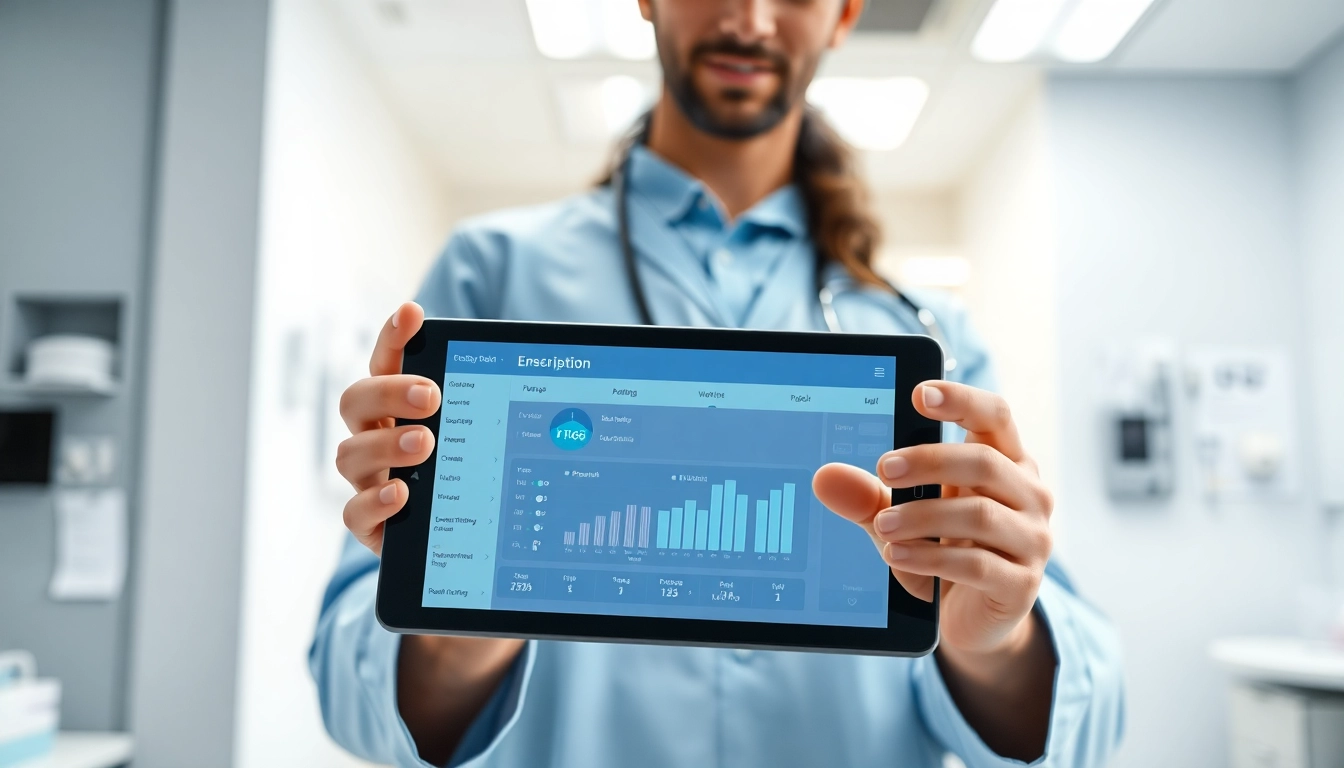Understanding Eprescription App Development
In today’s rapidly evolving healthcare landscape, the demand for technology solutions that streamline processes and improve patient care is at an all-time high. One of the most significant advancements in this realm is the development of eprescription app development. This technology is transforming the way physicians prescribe medications, patients receive prescriptions, and pharmacies fulfill them. This article delves into essential aspects of e-prescription app development, covering the fundamentals, benefits, regulatory considerations, and much more.
The Basics of Eprescription Technology
Eprescription technology refers to the electronic generation, transmission, and filling of medical prescriptions. Traditionally, prescriptions were handwritten and carried risks like misinterpretation, loss of paper, and delayed delivery. Eprescription systems eliminate these issues by providing a digital platform that connects patients, physicians, and pharmacies. The process typically involves healthcare professionals using software to create prescriptions, which can be securely transmitted to pharmacies electronically.
Moreover, e-prescribing systems often integrate with Electronic Health Records (EHR), allowing for a comprehensive view of patient medications. This integration helps physicians make informed decisions about prescribing while reducing the risk of medication errors. In recent years, technological advancements have enabled e-prescribing apps to include features such as automatic dosage calculations, drug interaction alerts, and patient education resources.
Key Benefits of Eprescription App Development
The advantages of implementing an e-prescription app are numerous and range from enhanced efficiency to improved patient safety.
- Increased Efficiency: Eprescription apps facilitate faster prescription writing and transmission processes. Physicians can create and send prescriptions in a matter of seconds, which saves time for both healthcare providers and patients.
- Reduced Medication Errors: By utilizing a standardized digital format, e-prescription apps reduce the chances of misreading handwriting and keep track of patient medication histories. Additionally, built-in drug interaction checks help in identifying potential conflicts.
- Improved Patient Engagement: Many e-prescription apps include features that allow patients to easily track their medications and receive reminders about refills, which fosters better adherence to treatment plans.
- Cost Savings: Eprescription can lead to decreased administrative costs for healthcare facilities by streamlining operations and reducing the errors that can lead to costly consequences.
Regulatory Considerations in Eprescription Services
Developing an e-prescription app requires careful attention to a variety of regulations to ensure compliance with local, state, and federal guidelines. In the United States, adherence to the Drug Enforcement Administration (DEA) regulations is imperative, particularly regarding controlled substances. E-prescribing of controlled medications necessitates compliance with the Electronic Prescribing of Controlled Substances (EPCS) standards.
Beyond EPCS compliance, e-prescription systems need to align with Health Insurance Portability and Accountability Act (HIPAA) regulations to protect patient privacy. This involves implementing robust security measures, such as data encryption, secure access protocols, and routine audits. Future regulations may continue to evolve, making it vital for developers to remain informed and agile in their approach to compliance.
Core Features of Eprescription Apps
User Interface and Experience Design
The user interface (UI) and user experience (UX) design of an e-prescription app are pivotal to its success. Clinicians need a straightforward, intuitive design that facilitates quick navigation and reduces the learning curve. Key components of effective UI/UX design include:
- Simple Navigation: Prescribers should be able to find prescriptions and patient records easily, minimizing the time spent on administrative tasks.
- Clear Visuals: Utilizing icons and color codes effectively can enhance usability and help users identify relevant functions quickly.
- Mobile Responsiveness: As many healthcare professionals use tablets or smartphones, the app must deliver a seamless experience across various devices.
Integration with Healthcare Systems
For an e-prescription app to be truly effective, it must integrate seamlessly with existing healthcare systems such as EHRs and pharmacy management software. This interoperability allows for real-time updates on patient records and ensures that all stakeholders have access to the most current information.
Integration can also enhance workflows, such as allowing nurses and pharmacists to view prescriptions as soon as they are sent. Open APIs and standard protocols such as HL7 and FHIR should be considered when developing these integrations to ensure compatibility with a wide range of interfaces.
Security and Compliance Requirements
Security is paramount in e-prescription app development, given the sensitivity of medical data. Developers must prioritize implementing high-level encryption protocols, two-factor authentication, and secure cloud storage solutions to protect patient data against breaches. Regular security assessments and updates are also essential to ensure that the application adheres to evolving cybersecurity standards.
Moreover, continuous training for healthcare providers regarding best practices for data security can help in mitigating risks related to human error, which is often the weakest link in cybersecurity.
Challenges in Eprescription App Development
Technical Obstacles and Solutions
The journey of developing a robust e-prescription app is fraught with challenges, particularly technical obstacles. Systems may experience integration issues with legacy healthcare systems or present performance problems under high data loads. To address these challenges, developers can employ strategies such as:
- Modular Architecture: Building a modular system allows for easier updates and targeted enhancements to specific functionalities without disrupting the entire app.
- Load Testing: Conducting thorough load testing helps identify potential performance bottlenecks, ensuring the app can handle large volumes of transactions without issues.
User Adoption and Training Concerns
User adoption is critical for the successful implementation of e-prescription apps. A common barrier to adoption is resistance from healthcare providers who are accustomed to traditional prescription methods. To ensure a smooth transition, comprehensive training sessions should be conducted, focusing on:
- Hands-on Training: Providing practical experiences with the app can alleviate fears and build confidence in users.
- Highlighting Benefits: Demonstrating how the app streamlines workflows and enhances patient safety can help motivate reluctant prescribers to adopt the technology.
Maintaining Compliance with EPCS
One of the ongoing challenges in e-prescription app development relates to compliance with EPCS regulations. Failure to adhere to compliance requirements can result in substantial legal penalties. To maintain compliance, developers must ensure that their apps follow the strict guidelines established by the DEA. Strategies include:
- Regular Audits: Conducting routine audits and updates to the app can help ensure ongoing compliance with evolving regulations.
- User Access Controls: Implementing role-based access controls helps ensure that only authorized personnel can prescribe controlled substances.
Cost Factors in Eprescription App Development
Estimating Development Costs
Understanding the cost involved in developing an e-prescription app is critical for stakeholders. Development costs can vary significantly, typically ranging from $80,000 to $150,000 or more, depending on the complexity and functionalities of the app being developed. Components influencing cost include:
- Features and Functionalities: The more advanced features you include, such as AI-driven recommendations or advanced security measures, the higher the development costs will be.
- User Base Size: A larger intended user base may require investing more in infrastructure and scalability solutions to ensure optimal performance.
Factors Influencing Budget Decisions
Several external factors can influence budget decisions during the e-prescription app development process, including:
- Regulatory Changes: Keeping up with new regulations or alterations in existing laws can necessitate additional development resources, affecting the budget.
- Market Competition: The desire to include cutting-edge features that give a competitive advantage may lead to increased spending.
Long-term Maintenance and Upgrades
Development is only the first stage in the lifecycle of an e-prescription app—the long-term maintenance and upgrade costs must also be planned for. Regular updates to comply with new regulations, security enhancements, and feature expansions are essential. Stakeholders should budget for:
- Ongoing Support: Ensuring adequate resources for technical support to address issues faced by users post-launch is critical.
- Version Updates: Regular upgrades to enhance functionality and compliance are essential for the application’s longevity and success.
Future Trends in Eprescription Technology
Adoption of Artificial Intelligence in Eprescribing
The future of e-prescription technology is poised for transformation with the integration of artificial intelligence (AI). AI can enhance the e-prescribing process by providing clinicians with data-driven insights and personalized recommendations based on patient history and current health trends. For example, AI algorithms could analyze patient demographics, potential drug interactions, and historical prescription data to suggest the most appropriate medication options.
Telemedicine Integration with Eprescription Apps
The rise of telemedicine is closely linked with the expansion of e-prescription capabilities. As more patients engage in online consultations, e-prescription apps will need to integrate these functionalities to allow healthcare providers to prescribe medications during virtual appointments effectively. This integrated approach can enhance the patient experience by making prescriptions accessible immediately after consultations.
Expected Changes in Regulatory Landscape
As e-prescription technology continues to evolve, so too will the regulatory landscape. Anticipated changes may include updates to EPCS regulations, new guidelines for data privacy, and adjustments in compliance requirements driven by advancements in technology. Staying ahead of these changes will be paramount for developers to ensure ongoing compliance and marketplace viability.



